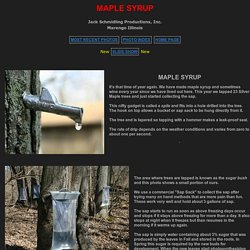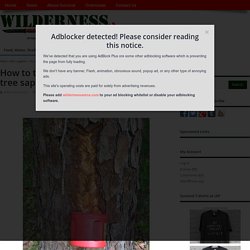

How to Make a Fish Hook Using a Soda Can Tab. Harvest And Eat Delicious Daylilies. I love a plant that is beautiful, provides several different tasty ingredients, and is easy to harvest in ways that allow the plant to replenish.

Daylily is one of those plants. Daylily (Hemerocallis fulva) is originally native to Asia. It was brought over to North America as an ornamental and has naturalized along roadsides and other sunny or partially sunny areas. The orange, or tawny daylily is the most common one to find growing wild, and that’s lucky for foragers because it is also the tastiest. Daylily is not related to the lilies that are common in florists’ shops. In early spring, harvest the shoots when they first emerge and are completely tender. Novice foragers sometimes think daylily shoots look like the similarly flat and linear leaves of iris. By the time the plants send up flower stalks, those tubers will have become depleted and mushy. Digging up the tubers means you killed the plant, right? In late spring and early summer, daylily plants develop flower buds.
How to Make DIY Activated Charcoal for Prepping and Survival. From filtering water to making your own gas mask or treating a poisoning, activated charcoal has many practical uses in a survival situation.

Making your own takes time, but it is ultimately more cost effective. A pound of activated charcoal costs $12-$15, while making your own is less than $1 per pound. Sword Of Survival: September 2010. Adequate nutrition plays an important part in wilderness survival.

Maintaining proper nutrition while in a wilderness survival situation may be very difficult to achieve and many do not achieve even the minimum nutritional needs. Survivors expend much more energy in survival situations than they normally would in their normal every day life. Basal metabolism is the amount of energy expended by the body when it is in a resting state. The rate of basal metabolism will vary slightly with regard to sex, age, weight, height, and race of a person. The basic energy expended, or number of calories consumed by the hour will change as a person's activity level changes. Although you can live several weeks without food, you need an adequate amount to stay healthy. Food provides energy and replenishes the substances that your body burns. The three basic sources of food are plants, animals (including fish), and survival rations. MAPLE SYRUM. Jack Schmidling Productions, Inc.

Marengo Illinois New SLIDE SHOW New It's that time of year again. We have made maple syrup and sometimes wine every year since we have lived out here. This year we tapped 23 Silver Maple trees and just started collecting the sap. Fifty-two Plants in the Wild You Can Eat. (Read: Fully Charge an iPhone in the Sun in Less Than 2 Hours) Suntactics.com April 15, 2013 We all know our vegetables and fruits are safe to eat, but what about other wild edibles?

Here are a few common North American goodies that are safe to eat if you find yourself stuck in the wild: Blackberries: Find Out More > Many wild berries are not safe to eat, it’s best to stay away from them. Dandelions: The easiest to recognize is the dandelion, in the spring they show their bright yellow buds. Asparagus: The vegetable that makes your pee smell funny grows in the wild in most of Europe and parts of North Africa, West Asia, and North America.
How to Tap Black Walnut Trees for Syrup. Wild Foods: Cattail Roots. With every part of the plant being edible in some way and its distribution nearly universal across North America, the cattail is a good plant to know!

Each and every part of the wonderful, widespread and edible cattail plant (Typha latifolia.) has its use, depending on the season, but today we will talk about the roots. I use the roots in a several ways--boiling and scraping for "mashed potatoes," soaking to dissolve the starch for use as flour and chopping them to pan-fry like potatoes. This article will cover finding and harvesting the roots, safety precautions and preparing them to eat. When to harvest Cattail roots can be harvested any time of the year.
Janettecormier. Grow Forage Cook Ferment, Author at Grow Forage Cook Ferment. How to tap a pine tree to collect pine tree sap - Wilderness Arena Survival. Pine tree sap can be tapped and used to make paint and resin products.

It makes a great water-proof sealant for buckets and tarps and can be used as an adhesive (boil it to reduce thickening and add ash to it to strengthen its waterproofing qualities). Pine tree sap can also be used as stove fuel and it can be boiled and mixed with ash or sand and compressed to make concrete. Fortunately, tapping a pine tree for its sap causes no permanent damage to the tree. To begin, find a mature, live, good-sized, tight-barked pine tree for the best results. Pine trees most suitable for tapping include Southern Yellow Pine, Black Pine, Loblolly Pine, and Improved Slash Pine. Using a machete, hatchet, or similar tool, hack the bark away from the live wood about 3 feet from the ground to create a 10 inch wide by 6 inch high cleared area.
Place a bucket flat against the bottom of the cleared area and tie it tightly against the tree so it remains in place.